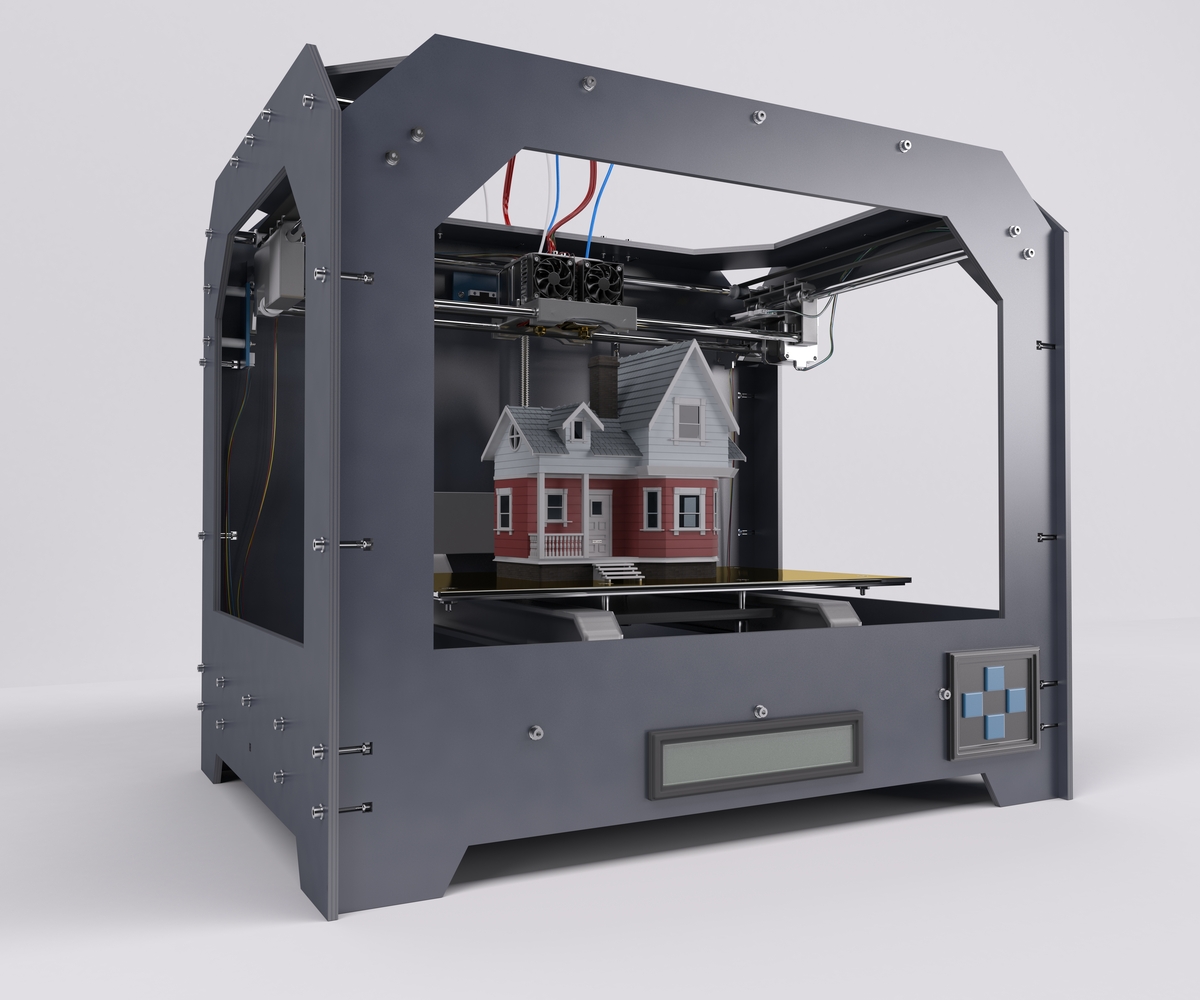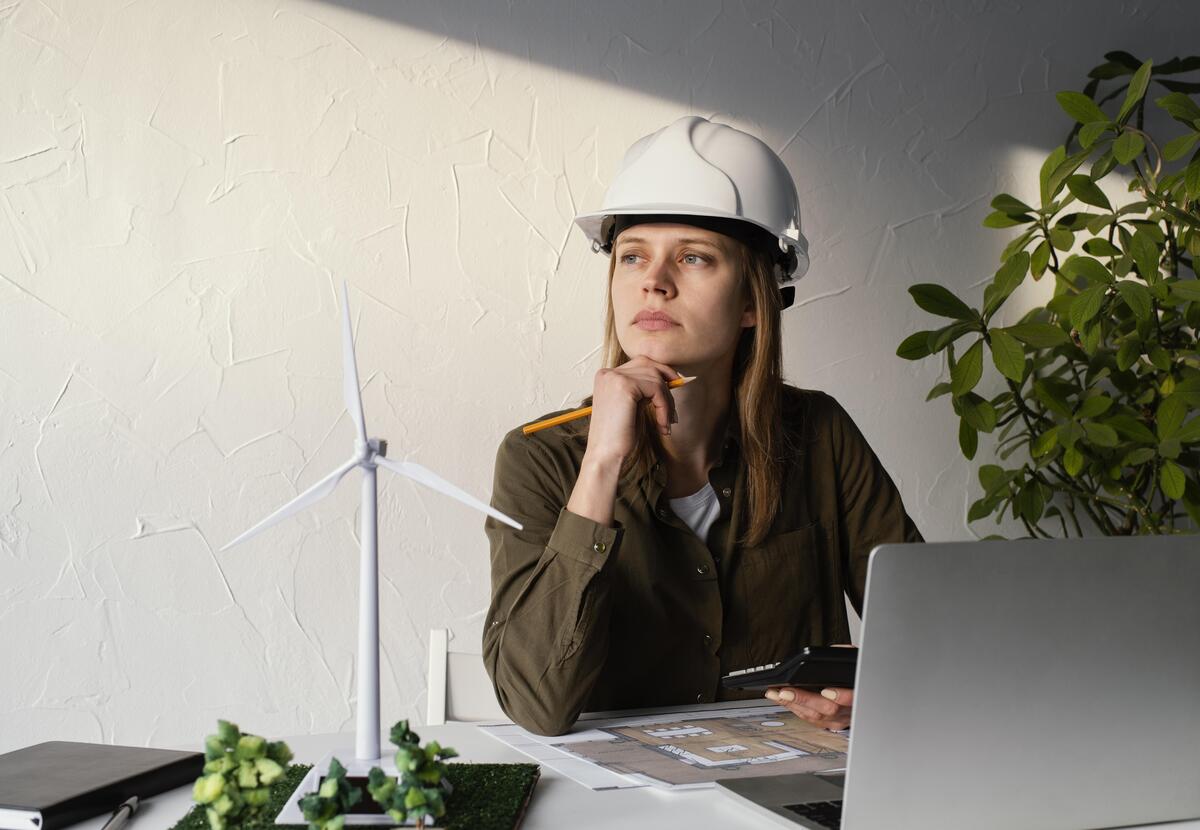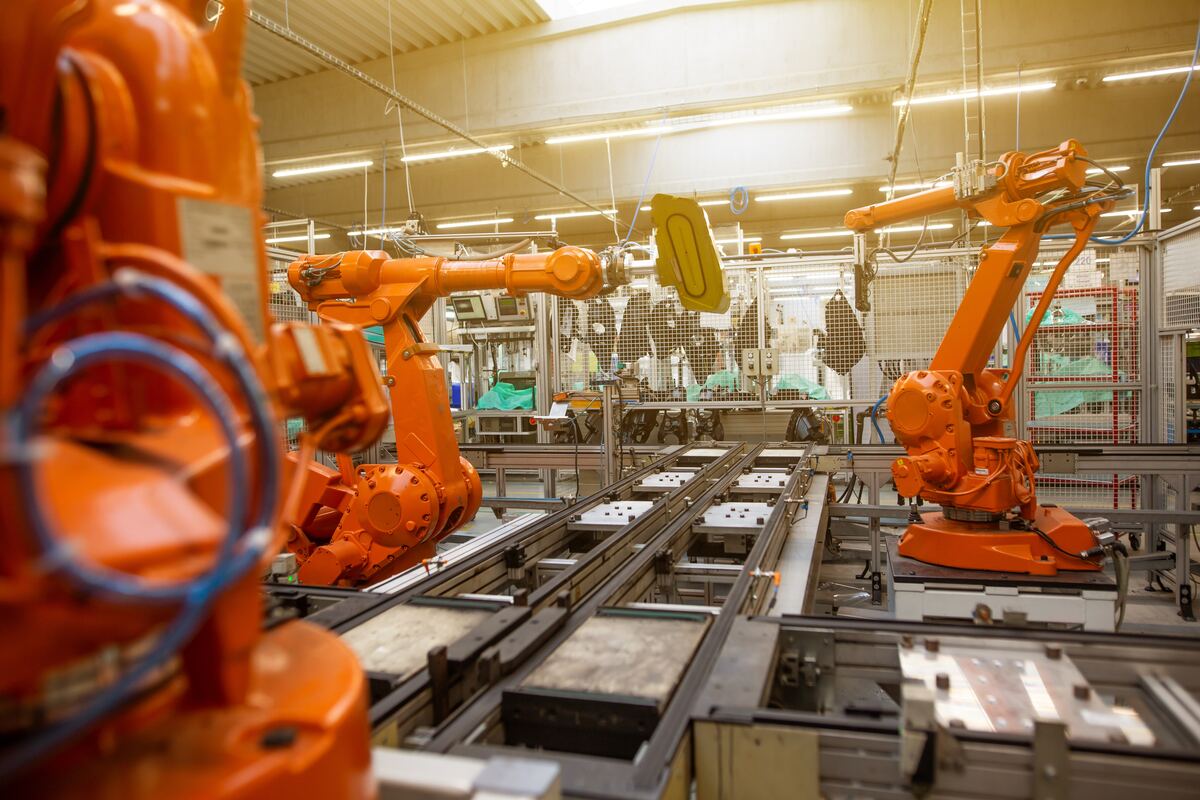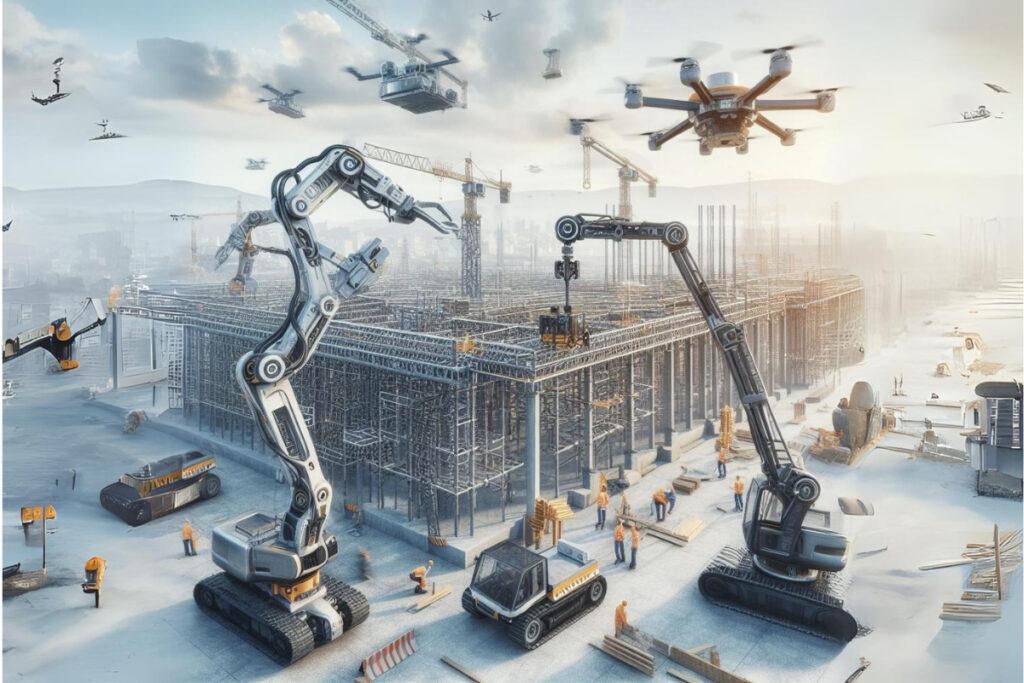Exclusive Neuroject Article: : The term ‘building technology’ denotes the technical methods and procedures utilized in erecting structures. It has gained heightened significance within the construction industry due to a shift from conventional building types to unique prototypes. As buildings evolve and demand greater performance, the complexity of building processes has escalated, along with an increased array of specialized suppliers and products.
Construction fundamentally involves the assembly and movement of materials and equipment to create finished structures for various purposes. Unlike manufacturing, construction procedures are inherently non-standardized, occurring neither in a fixed sequence nor at a set location.
While the core process of construction has retained its essence since the Middle Ages, the technology surrounding construction has undergone substantial changes. Early dwellings comprised animal skins draped over sticks or a mix of mud, straw, timber, and stone, primarily serving the purpose of shelter. The ancient Romans introduced early concrete experiments, blending lime and volcanic rock to construct several iconic structures. The current article lists seven significant building innovations that have recently been applied to the new building technology sector. These innovations paved the path for more affordable, resource-efficient, and environmentally friendly design.
The promise and ability of modern building technology to enable businesses to develop more quickly and intelligently is what makes it appealing. Be more productive and competitive, in other words. The most recent inventions frequently go above and beyond that to be more eco-friendly, provide people with unique housing options, build roads with cutting-edge materials, and function more intelligently. Furthermore, communication, analytics, and big data are becoming more efficient thanks to new construction technologies.
Table of Contents
Investigating the Development of the Construction Industry
The outbreak of building technology is fueling a revolution in the construction sector that is testing established norms as we negotiate the complexity of the 21st century. Adopting smart construction techniques is not just a choice; it is actually required to improve built-environment sustainability, cut costs, and increase efficiency.
Building technology development has been accelerating as a result of several key industry advancements. Construction processes, technological and software advancements, current market conditions, and governmental engagement in new building technology breakthroughs are a few of these advances.
Other market trends were also correlated with investments made in the infrastructure, energy, and utility sectors, which continue to be major contributors to the growth in overall construction production. We have seen a number of international estimates and reports on the industry market overview based on all these variables. Construction software and cutting-edge technology are being used at every level of the process. From project planning through on-site work to complementing stages.
Driving efficiency and higher-quality results are about more than just competition in the area of building technology. It aims to improve a sector that, in all respects, drives the economy. New heavy machinery is frequently credited with advancing building technology. But connected technology advancements have also made significant strides. The tools of new building technology are available for use in the boardroom as well as the field and home offices.

Definition of Building Technology
Building technology encompasses the diverse array of technical knowledge, methods, materials, systems, and practices employed in the design, construction, and maintenance of buildings and other built structures. It involves the application of engineering principles, architectural expertise, and advancements in materials science, construction techniques, and sustainable practices to create safe, functional, efficient, and aesthetically pleasing spaces.
This multidisciplinary field encompasses various aspects, including structural systems, materials science, HVAC (Heating, Ventilation, and Air Conditioning), electrical and plumbing systems, energy efficiency, smart building technologies (such as IoT – Internet of Things), environmental considerations, and construction management techniques.
Building technology aims to enhance the performance, durability, safety, and sustainability of structures while adapting to evolving societal needs, technological advancements, and environmental challenges. It encompasses innovations that optimize construction processes, improve energy efficiency, and prioritize environmentally friendly practices to create buildings that meet both present and future demands.
7 Important Building Technology Ideas for 2023
Modern buildings are composed of intricate systems and assemblies that are interconnected and need to function cohesively to meet specific performance standards. Achieving this necessitates collaborative efforts among various stakeholders including clients, consultants, suppliers, contractors, and subcontractors. Their collective work is crucial in effectively preparing planning applications, submissions for building regulations, entries for programs like BREEAM, construction documentation, operation and maintenance manuals, and other essential documentation. Here’s the list of top 7 building technologies:
1. Artificial Intelligence (AI) and Machine Learning
In the data science branch of artificial intelligence, large amounts of data are combined with computer technology to enable problem-solving in the building technology domain. Although the terms artificial intelligence and machine learning are frequently used interchangeably, they do not necessarily mean the same thing. Machine learning is a subset of artificial intelligence that increases performance without being explicitly taught. It learns through experience.
Construction AI has the potential to make significant improvements and foster broad-scale innovation and creativity. Without exaggeration, we can state that this cutting-edge technology ensures rapid and precise outcomes. Businesses that can harness data, generate understandable insights, and make strategic decisions with knowledge may benefit from the data-rich, complicated modern construction environment.
After years of research and development, AI is finally finding its foothold in the building technology sector. Because of improvements in processing power, algorithms that follow exact procedures, enormous amounts of data produced by the industry, and breakthroughs in the systems that combine these improvements, AI is a reality today. The time to understand AI and incorporate it into your company is now.
Improvements in performance and safety are made possible by AI, a technology that is still developing in other facets of the building technology industry. Predictive maintenance, site security, robotics, project management, quality assurance, and building performance are a few examples.
Suggested article for reading: Artificial Intelligence or AI in Construction; A Comprehensive Guide to 2024
2. Extended Reality
Extended reality (XR) is in the category of new building technology that is becoming more and more popular across a variety of business sectors. Recently, construction safety has been given consideration for its use. Virtual reality, augmented reality, mixed reality, and all other building technology that replicate reality are collectively referred to as “extended reality.” It is an important technological trend at the moment since we all yearn to transcend the alleged real bounds of the planet. In a variety of industries, 3D sketching, the development of digital twins, and design collaboration are being revolutionized by virtual and mixed reality.
The distinctions between the words virtual reality (VR), augmented reality (AR), mixed reality (MR), and extended reality (XR) are often unclear.
- A view of the real world—the physical world—with digital components superimposed on it is called augmented reality (AR).
- Mixed reality (MR) is a perspective of the physical world with a layer of digital elements over it, allowing for interaction between physical and digital elements.
- A totally immersive digital environment is called virtual reality (VR).
- Extended reality (XR) is the catch-all word for all these various technologies, such as AR, MR, and VR.
Heavy machinery repair is a prime instance of this building technology. Complete training for operators and technicians is one of the finest ways to lengthen the life of these devices. This is where AR, MR, and VR shine because they produce incredibly compelling instructional experiences. Virtual reality simulations are a safer and more cost-effective way for drivers to learn how to operate equipment than in-person instruction.
Equipment technicians can also utilize AR and MR to learn how to fix cars and help with repairs while on the job. They can use AR glasses in conjunction with a virtual guide to making sure they are making repairs in the real world precisely and accurately. Any building technological, practical task can be handled using this method. For instance, AR or MR glasses can assist construction workers in accurately installing pipelines or performing intricate electrical maintenance. The chances of mistakes and safety concerns when doing these tasks in construction are decreased by the virtual guide.

3. 3D printing
When businesses or projects use computer-controlled procedures to progressively layer materials to form three-dimensional shapes, this is known as 3D printing in the building technology industry. 3D printers can be used to produce components off-site for later assembly or to build whole buildings on-site in the domain of building technology. The printer produces the construction on a platform using materials like cement, plastic, or liquid metals after receiving dimensions from a software program.
In the era of new building technology, with the help of a machine that builds and assembles structures, 3D printing in construction has the potential to replace certain manual labor. This may be a more economical, practical, and environmentally responsible method of building new structures. You may determine whether the technology might help you boost client happiness and streamline operations by learning about the advantages of 3D printing in the building technology industry.
Three primary forms of 3D printing are used in building technology:
Robotic extruder arms: the robotic arm extruder technique, also known as contour crafting, uses a crane-like arm that swings back and forth to release materials and lay down layers. To allow the arm to adjust its location and height as needed, construction companies place rails around building spaces. This technique might be used for more modest 3D printing projects. For projects employing this technique, you might need to perform additional work depending on the materials. For instance, to prevent concrete from setting up too quickly, you may mix some concrete and pour it into the printer as you work.
Sand deposits: in this technique, structures are created by releasing layers of sand from a 3D printer. The machine produces droplets that solidify and bond the sand once the layers have reached the proper thickness. This technique can be applied to smaller building materials or structures.
Combining technology with other: you can use other building technologies, like welding, in conjunction with 3D printing. Raw metals can be layered using the robotic arm or other printing equipment. The materials can then be solidified through welding as the machine prints them. By using this technique, it may be possible to build bridges and other structures without a foundation.

Advantages of 3D printing for building
As some businesses have employed 3D printing in the building technology domain to produce offices, homes, and other structures, it can address many of the problems with conventional construction. The following are some benefits of 3D printing for building:
1. Lower waste: construction sites can produce large amounts of garbage, whereas 3D printers typically produce nearly little waste because they only use the materials necessary to complete a task. Other waste-reduction strategies, such as prefabrication (where construction firms construct a structure in small sections so people can swiftly assemble it on-site), may also be used in building plans to reduce waste output by this building technology even more.
2. Recycling: using recycled materials in your projects is another advantage of 3D printing in the building technology sector for the environment. Recycled plastic can be used to build a strong structure since 3D printers can use materials to generate lattice patterns. Other recyclable resources, such as recycled concrete, can be used at construction sites.
3. Rapid production: continuous 3D printing is possible with little oversight. Projects can occasionally take longer since construction projects often have restrictions on when they can be built, such as at night or in bad weather. Due to their near automation, 3D printers may occasionally build houses or other structures in a few days by using this building technology.
4. Cost-effectiveness: the labor and time savings for construction projects are just one of the numerous ways 3D printers are economical. Before measuring and cutting what they actually need, construction workers frequently buy raw materials, which can result in scraps. Construction workers frequently buy the precise quantity of materials they need for 3D-printed products since it is more economical.
5. Innovative responses: unlike traditional construction techniques, which rely on recycling blueprints and templates, 3D printing enables the creation of unique solutions. With the use of modern architecture software, architects may develop imaginative buildings. For instance, you can modify the models in the program and print them again until you build the finished product if customers desire a particular design or uncommon forms for their homes or offices. This can be done by this building technology with minimal financial or labor outlay.
6. Lower human influence: along with reducing human waste production on building sites, 3D printing offers the potential for nearly error-free construction sites. For clients, 3D printing can create high-quality structures and lower the incidence of construction accidents.
4. Genomic Algorithm
The control algorithm can develop optimization of the energy consumption of air conditioning and exhaust fans through Deep Q-Learning in reinforcement learning. Although the evaluation indicators of the inside environment, such as energy consumption, thermal comfort, and indoor air quality, are useful for monitoring the air conditioning system, they are not directly beneficial for air distribution information.
Residential and commercial end users together make for 20.1% of the total energy utilized globally in the building sector. More than 70% of the energy used by buildings in residential structures is consumed by air conditioning and lighting equipment (air conditioning consumes about 45% and lighting consumes about 25% respectively). From the standpoint of thermal comfort, cooling in buildings is even more crucial in tropical and subtropical regions, especially in public buildings like offices, supermarkets, sports facilities, etc., where energy consumption accounts for more than 56% of the building’s energy requirements.
By examining their design utilizing genetic algorithms in the field of building technology, ventilation techniques can produce an acceptable interior environment and energy savings. It is challenging to monitor and modify the surroundings of the inhabitants in a structured setting since the indoor environment indicators vary with the room height. The forecast performances under heating and cooling situations will be taken into consideration and compared in this area. The genetic algorithm improves the ability to anticipate interior air quality when it is heated.

5. New Energy Solutions
A fantastic strategy to reduce or get rid of emissions from construction sites is to use renewable energy. Construction sites contribute significantly to global greenhouse gas (GHG) emissions, accounting for 39% of all carbon dioxide released worldwide as a result of energy use and industrial processes. This is due to the considerable energy needed to run heavy equipment. As a result, one of the primary areas of focus for reducing GHG and limiting global warming is construction sites.
Investors are turning to alternative energy sources, such as wind, solar, hydropower, hydrogen power cells, etc., to power construction sites due to the rapid expansion of urban construction and rigorous carbon reduction requirements. Furthermore, technical advancements have increased the effectiveness, availability, and affordability of renewable energy in the building technology sector. It is now simpler than ever to convert to alternative energy sources because of this solution in the building technology domain.
At construction sites, electricity is used for electric equipment, lighting, electric vehicles, air conditioning, and heating. Construction sites will be environmentally friendly and businesses will be encouraged to invest in developing renewable energy building technology by powering these with green energy. Additionally, the construction sector can fully adhere to sustainability guidelines when it uses equipment fueled by renewable energy sources as a new building technology.
In the following, the top 4 Renewable Energy Sources.
1. Solar Power
Construction sites can be powered by solar energy, which is an endlessly renewable energy source. Additionally, a variety of large pieces of equipment, such as Volvo’s loaders, and excavators, are designed from the ground up to run on solar energy. The adoption of this solar-powered equipment as a part of the building technology domain is a great step in the direction of lowering greenhouse gas emissions because heavy construction equipment is a significant source of pollution.
Additionally, green lighting options like solar lanterns, which are more cost-effective than alternatives using fossil fuels, can be used to illuminate building sites. Green lighting systems provide the necessary visibility while costing less to run and emitting fewer pollutants.
Photovoltaic windows that can cut greenhouse gas emissions from buildings have also been created by commercial solar companies as a building technology aspect. The amount of light that reaches the living space can be adjusted and electricity can be produced using photovoltaic windows. As a result of the decreased transparency, they lower their carbon footprint, energy expenses, and air conditioning costs.
2. Wind Power
Another practical renewable energy source appropriate for places without access to a power grid, such as building sites, is wind energy. Therefore, staff can work with wind power farms to obtain the necessary energy instead of relying on gas-powered generators, building firms, and project sites.
Additionally, wind energy has a low cost. So, if the construction sector switches to wind energy, it can support the owners of wind farms and contribute to a decrease in greenhouse gas emissions.
3. Hydroelectric Energy
The most popular clean energy source worldwide is hydroelectricity. Of all renewable energy sources, it generates the most of it—roughly 71% of all green energy.
Although hydroelectric power may not be as useful as solar power, local hydropower facilities can provide the required power for construction personnel without the need for generators.
Where wind power is absent, construction workers may have access to hydroelectric energy. Construction sites can transition to such effective renewable energy sources thanks to this accessibility. The entire industry will become more sustainable as a result.
4. Hydrogen Power Cells
A more prevalent source of renewable energy is hydrogen power cells. Due to their transitory nature, their portability and scalability make them especially appropriate for building sites.
A fuel cell system designed exclusively for construction sites has been created by Siemens Energy. It includes an equipment-powering fuel cell housed in a shipping container.

6. Robotic Process Automation
Modern software technology called robotic process automation (RPA) automates construction operations, making laborious tasks easier to do and more controllable. The purpose of this technology is to make building tasks more efficient rather than to completely replace human labor.
Robotic process automation automates building processes that need a lot of human resources by using modern technology like software or programming.
RPA is frequently utilized in the construction sector to carry out routine, rule-based tasks. RPA is an effective technology for automating intricate construction tasks and cutting down on project costs and duration.
Due to its adaptability, which makes it suited for usage both on a construction site and in an office environment, RPA is preferred by the majority of construction organizations.
RPA is more useful and effective in office administration, but it doesn’t mean it is ineffective for on-site tasks. RPA can improve productivity by performing the following tasks locally:
- Layout surveys using RPA can be precise and accurate. It can be used to precisely place bricks in predetermined patterns.
- RPA would support planning and strategy for reducing raw materials. As a result, less waste will be generated when applying the materials.
- It can produce premium raw materials on building sites. Where raw ingredients are not purchased but instead prepared on-site, it is generally adequate.
- Materials for 3D printing buildings.
- Robotic demolition of buildings (RPA) can be employed to eliminate any safety hazards during the demolition process.

Suggested article for reading: Construction Robots in 2024: A Comprehensive Guide
7. Internet of Things (IoT)
The abundance of physical items that are integrated with technical hardware and software, such as sensors, trackers, storage, and other devices, to be able to exchange, produce, and use data that is thus collected and sent, is known as the Internet of Things, or IoT.
Due to the embedded computing system in each object, each one may be uniquely identified while still utilizing the current Internet infrastructure. By 2021, there will be about 40 billion active endpoints on the market, according to earlier predictions made by experts. By 2025, there will likely be more than 70 billion active IoT connections. The Internet of Things (IoT) is a development that aims to automate procedures, alter industries, and enhance ROI.
Critical changes are currently being made to the construction sector that will increase productivity, well-being, process improvement, and the use of new tools by considering using new building technology. The Internet of Things (IoT) in civil engineering takes into account the incorporation of basic, low-control sensors that can successfully send data at a low cost. IoT technologies for the construction industry are drastically changing how the sector pivots as they become more pervasive. Each partner is now better able to comprehend what is happening at every point of the real-time development process, from planning through constructive development, post-development, and how the structure performs during administration. Construction Industry IoT Benefits and Applications
The following are the 4 main opportunities that these technologies offer:
1. Safety
Two of the most difficult challenges to manage on a building site are security and safety. With IoT-enabled tags, any material or item theft can be easily stopped because these sensors will let you know where the materials or objects are right now. Sending a human worker to undertake a comprehensive check is no longer necessary. IoT makes it possible to create a digital real-time job site map, replete with updated risks related to the activity and notifies each worker when they are getting close to a risk or entering a hazardous area.
The abundance of physical items that are integrated with technical hardware and software, such as sensors, trackers, storage, and other devices, to be able to exchange, produce, and use data that is thus collected and sent, is known as the Internet of Things, or IoT.
Due to the embedded computing system in each object, each one may be uniquely identified while still utilizing the current Internet infrastructure. By 2021, there will be about 40 billion active endpoints on the market, according to earlier predictions made by experts. By 2025, there will likely be more than 70 billion active IoT connections. The Internet of Things (IoT) is a development that aims to automate procedures, alter industries, and increase ROI.
Drones can be used to track work remotely and collect precise survey maps and aerial images of a job site, saving time and money on a project. Aerial images can give project managers a unique perspective on the job, enabling them to spot potential problems that might not have been visible from the ground. Using real-time tracking and cloud-based data sets, construction companies can reduce theft, increase productivity, and manage costs.
2. Performance
The building sector is governed by deadlines and goals. Because they force budget increases, backlogs must always be avoided. By boosting readiness and efficiency, IoT can increase production as its role in building technology. It is essential to have a sufficient supply of materials on hand to guarantee the job runs without a hitch. The delivery of materials to the job site, however, is frequently delayed due to poor scheduling brought on by human error.
It is possible to use IoT to determine the quantity automatically, place orders automatically, or sound an alarm if the supply unit has the proper sensor. IoT allows stakeholders more time to come up with innovative ideas that will enhance project delivery and customer satisfaction by playing a part in the development of building technology through contacts with project owners and among themselves.
3. Maintenance
Waste will occur if power and fuel usage are not carefully managed, raising the project’s overall cost. Due to the availability of real-time data, it is now possible to plan maintenance breaks or refueling stops and turn off idle equipment. Field sensors also assist in problem avoidance, which reduces warranty claims, boosts profitability, and maintains customer satisfaction. In addition to getting stock-depletion alerts, sensors can be used to monitor the status of materials, including their appropriateness, temperature, environment, or humidity, handling problems, damage, and expiration.
Equipment providers have had to evolve from being merely vendors to becoming partners who continuously monitor and maintain equipment so that customers can focus on their core businesses by developing the building technology.
4. Management of Resources and Budgeting
The majority of construction companies have trouble staying within their budgets. Frequently, personnel remains idle, available resources are not used to their full potential, and the true cost of renting space is not considered in building technology.

Examples and Case Studies
Examples and case studies in building technologies serve as practical illustrations of successful implementation and the impact of innovative approaches within the construction industry. They offer tangible demonstrations of how various technologies have been applied to address specific challenges or achieve certain goals. Here are some examples across different building technology domains:
Sustainable Building Technologies
Net-Zero Energy Buildings: Structures designed to produce as much energy as they consume, showcasing advanced energy-efficient systems and renewable energy integration.
LEED-Certified Buildings: Case studies of buildings certified by Leadership in Energy and Environmental Design (LEED), demonstrating sustainable construction practices and materials.
Smart Building Technologies
IoT Integrated Buildings: Examples where Internet of Things (IoT) devices and sensors are used for data-driven insights and automation in building management systems.
Smart HVAC Systems: Case studies showcasing intelligent heating, ventilation, and air conditioning systems optimizing energy usage and indoor comfort.
Advanced Construction Techniques
Prefabricated Modular Buildings: Instances of buildings constructed using prefabricated modules or components, demonstrating faster construction times and cost-effectiveness.
3D-Printed Structures: Examples of structures created through 3D printing technology, showcasing intricate designs and reduced material waste.
Structural Systems
Innovative Structural Materials: Case studies highlighting the use of advanced materials like carbon fiber, bamboo, or engineered wood for stronger and more sustainable construction.
Seismic-Resistant Buildings: Instances of buildings designed with innovative structural systems to withstand earthquakes and other natural disasters.
Other Notable Examples
Renovation Projects: Case studies of successful renovation projects adopting sustainable practices or modern technologies for revitalizing older structures.
Community-Driven Construction: Examples where communities actively participate in building processes, fostering sustainable and socially responsible construction practices.
These examples and case studies serve as valuable benchmarks and learning opportunities for professionals, showcasing the practical applications and benefits of adopting various building technologies. They provide insights into best practices, challenges faced, and the overall impact of these technologies on construction efficiency, sustainability, cost-effectiveness, and user experience.
Latest Trends and Innovations in 2023
In 2023, the construction industry continues to witness remarkable advancements and trends in building technology. Here are some of the latest trends and innovations shaping the landscape:
1. Green Building Solutions
Circular Economy Practices: Emphasis on reducing waste and reusing materials through circular design principles.
Biophilic Design Integration: Integrating nature-inspired elements into buildings for enhanced well-being and sustainability.
2. Smart and Connected Buildings
AI-Integrated Systems: Implementation of artificial intelligence for predictive maintenance, energy optimization, and enhanced building management.
Edge Computing in IoT: Utilizing edge computing to process data from IoT devices in real-time, improving responsiveness and security.
3. Modular and Prefabricated Construction
Off-Site Construction: Increased adoption of off-site manufacturing for quicker, more efficient construction.
Modular Designs for Flexibility: Designing modular structures that can adapt to changing needs and environments.
4. Advanced Materials and Techniques
Carbon-Capturing Materials: Development and use of materials that actively capture carbon dioxide from the environment.
Nanotechnology in Construction: Implementation of nanomaterials for enhanced durability, insulation, and structural strength.
5. Resilient and Adaptive Design
Climate-Resilient Architecture: Designing structures to withstand extreme weather events and climate change impacts.
Adaptive Reuse of Spaces: Transforming existing buildings for new functionalities, promoting sustainability and resource efficiency.
6. Renewable Energy Integration
Hybrid Energy Systems: Integration of multiple renewable energy sources for more reliable and sustainable power generation.
Energy-Positive Buildings: Designs focused on generating surplus energy for the grid, contributing to a net-positive impact.
7. Virtual and Augmented Reality in Construction
VR/AR for Design and Visualization: Leveraging virtual and augmented reality for immersive design reviews, training, and project visualization.
8. Data Analytics and Building Performance
Predictive Analytics for Maintenance: Using data analytics to predict maintenance needs, optimizing building performance and longevity.
Occupant-Centric Design: Utilizing data to create user-centric spaces and improve overall occupant experience.
These trends reflect a push towards sustainability, efficiency, resilience, and enhanced user experiences in the construction industry through the integration of cutting-edge technologies and innovative approaches.
Image: What-is-Building-Technology-Type-Example-&-Everything-You-Need-to-Know-in-2023-01
Alt text: architect-using-vr-glasses-design-building-model-construction-layout-woman-contractor-working-with-virtual-reality-headset-plan-real-estate-structure-creating-urban-project-Building-Technology
In Summary: The Impact and Future Prospects of Building Technologies
With advances in machine learning and natural language processing, building technology will be more common in 2024. By using these tools, we may use this technology to execute increasingly difficult jobs and gain a greater understanding of the design process. Building technology is predicted to drastically alter how we live and work in the future.
Building technology’s most recent advances in hardware components are impressive. The sector is currently being driven by greater collaboration, discovery, and analytics tools. Manufacturers have produced amazing instruments to accomplish tasks as needs evolve. Since the introduction of digital tools, construction has seen growth in this sector. The most notable advancements in construction have been in software.
Numerous resources will be invested in significant construction projects in the near future, producing enormous amounts of data. Financial success depends heavily on finding methods to use such data to enhance efficiency, analysis, and responsibility. Processes for managing building projects are now more efficient, which also cuts down on waste. This includes allocating resources, monitoring performance, maintaining equipment, and working together across teams by considering the building technology aspects.
Resources:
constructconnect | simplilearn | Varjo | interaction-design | Indeed | indovance | theconstructor | pirxon | theconstructor | intellectsoft | rhumbix
from ScienceDirect:
Kuan-Heng Yu, et al., Optimization of thermal comfort, indoor quality, and energy-saving in campus classroom through deep Q learning, Case Studies in Thermal Engineering, Volume 24, 2021, 100842.
For the pictures: Usplash | freepik





